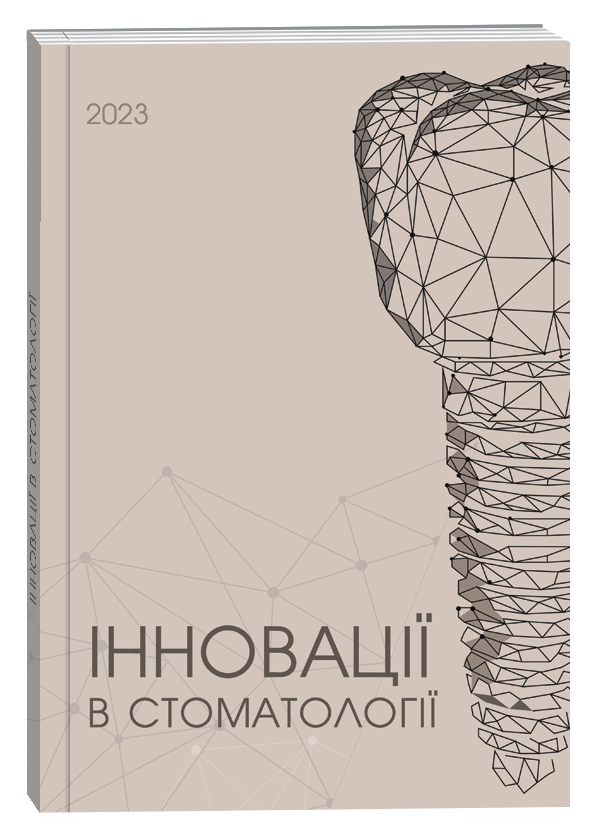THE IMPACT OF COVID-19 ON SALIVA HOMEOSTASIS: ROLE OF Α-AMYLASE, GLUCOSE AND SIGA IN THE ONSET OF DENTAL CARIES
DOI:
https://doi.org/10.35220/2523-420X/2024.4.2Keywords:
caries, COVID-19, glucose, sIgA, α-amylases, demineralizationAbstract
The aim of the current study was to evaluate the impact of COVID-19 on the properties of oral fluid, in particular, immunologic specific defense (sIgA), glucose and α-amylase. Materials and methods of the study: in accordance to the aims and objectives of the study, 110 patients from 18 to 35 years were examined and divided into 2 groups: patients who were diagnosed with COVID-19 by polymerase chain reaction test (PCR test) in their anamnesis (from 2 to 6 months ago), as well as conditionally healthy individuals. The first group was divided into three subgroups according to the severity of the COVID-19 disease as classified by the WHO: mild, moderate, and severe. Oral fluid α-amylase activity was determined by the Wolgemuth method. The method of enzyme-linked immunosorbent assay (ELISA) was used to assess local immunity in the oral cavity. The glucose content in the oral fluid was determined by the enzymatic colorimetric method. Results of the study: the results of the study revealed a significant risk of dental caries among patients with COVID-19. The activity of α-amylase was significantly reduced and equalled 122±7.94 for patients of the third subgroup, 161±7.36 for the second, 201±8.26 for the first, which is significantly less than in patients of the control group – 251±7.90. The specific immunity of the oral cavity also underwent changes as a result of the disease, as evidenced by the sIgA values, which had the lowest values in the third subgroup – 88.02±1.93. The results of the first and second subgroups additionally differed from those of conditionally healthy patients (123.55±2.16) and amounted to 100.44±2.75 and 114.65±1.92, respectively. Comparison of the concentration of glucose in the oral fluid revealed its increase depending on the severity of the disease: 0.81±0.02 for the first subgroup, 1.07±0.05 for the second, 1.41±0.07 for the third. Conclusions. The study showed that patients with an anamnesis of COVID- 19 were more prone to carious lesions of the hard tissues of the tooth due to a decrease in the natural defence mechanisms of the enamel structure.
References
Amante L. F. L. S., Afonso J. T. M., Skrupskelyte G. Dentistry and the COVID-19 outbreak. International Dental Journal. 2020. URL: https://doi.org/10.1016/j.identj.2020.12.010.
Reyes Carmona J. COVID-19 Outbreak and Dentistry. Odovtos – International Journal of Dental Sciences. 2020. Т. 22, № 2. С. 9. URL: https://doi.org/10.15517/ijds.2020.41489.
COVID-19 outbreak: A renaissance in dentistry / S. Verma та ін. Journal of Dental Research and Review. 2021. Т. 8, № 1. С. 59. URL: https://doi.org/10.41 03/jdrr.jdrr_72_20.
Overlapping and discrete aspects of the pathology and pathogenesis of the emerging human pathogenic coronaviruses SARS‐CoV, MERS‐CoV, and 2019‐nCoV / J. Liu та ін. Journal of Medical Virology. 2020. Т. 92, № 5. С. 491–494. URL: https://doi.org/10.1002/jmv.25709.
Paules C. I., Marston H. D., Fauci A. S. Coronavirus Infections–More Than Just the Common Cold. JAMA. 2020. Т. 323, № 8. С. 707. URL: https://doi.o rg/10.1001/jama.2020.0757.
Zhan S., Yang Y. Y., Fu C. Public’s early response to the novel coronavirus–infected pneumonia. Emerging Microbes & Infections. 2020. Т. 9, № 1. С. 534. URL: https://doi.org/10.1080/22221751.2020.1732232.
Barranca-Enríquez A., Romo-González T. Your health is in your mouth: a comprehensive view to promote general wellness. Frontiers in oral health. 2022. Т. 3. URL: https://doi.org/10.3389/froh.2022.971223.
Neves R. P. P., Fernandes P. A., Ramos M. J. Role of enzyme and active site conformational dynamics in the catalysis by α-amylase explored with QM/MM molecular dynamics. Journal of chemical information and modeling. 2022. URL: https://doi.org/10.1021/acs.jcim.2c00691.
Цубер В. Ю., Тарасенко Л. М. Слинна альфа-амілаза як маркер стресорної реакції організму. Медична хімія. 2011. Т. 13, № 3. С. 121–125.
Effect of alpha amylase on early childhood caries: a matched case-control study / F. Mojarad та ін. Brazilian Dental Science. 2013. Т. 16, № 1. URL: https:// doi.org/10.14295/bds.2013.v16i1.873.
Relationship between salivary alpha-amylase enzyme activity, anthropometric indices, dietary habits, and early childhood dental caries / Z. Parsaie та ін. International journal of dentistry. 2022. Т. 2022. С. 1–7. URL: https://doi.org/10.1155/2022/2617197.
Primasari A., Octiara E., Yanti N. Risk factor of secretory immunoglobulin A and salivary lysozyme level in children aged under 3 years to severe early childhood caries. IOP conference series: earth and environmental science. 2019. Т. 305. С. 012001. URL: https://doi.org/10.1088/1755-1315/305/1/012001.
Bielawski K. The assessment of sIgA, histatin-5, and lactoperoxidase levels in saliva of adolescents with dental caries. Medical Science Monitor. 2014. Т. 20. С. 1095–1100. URL: https://doi.org/10.12659/msm.890468.
Brandtzaeg P. Secretory IgA: designed for antimicrobial defense. Frontiers in immunology. 2013. Т. 4. URL: https://doi.org/10.3389/fimmu. 2013.00222.
Salivary antibody response to streptococci in preterm and fullterm children: A prospective study / M. C. L. Borges та ін. Archives of Oral Biology. 2015. Т. 60, № 1. С. 116–125. URL: https://doi.org/10.1016/j.archoralb io.2014.08.003.
Salivary IgA antibody responses to Streptococcus mitis and Streptococcus mutans in preterm and fullterm newborn children / R. D. Nogueira та ін. Archives of Oral Biology. 2012. Т. 57, № 6. С. 647–653. URL: https://doi.org/10.1016/j.archoralbio.2011.11.011.
Comparisons of IgA response in saliva and colostrum against oral streptococci species / B. B. Bertoldo та ін. Brazilian oral research. 2017. Т. 31. URL: https://doi.org/10.1590/1807-3107bor-2017.vol31.0039.







